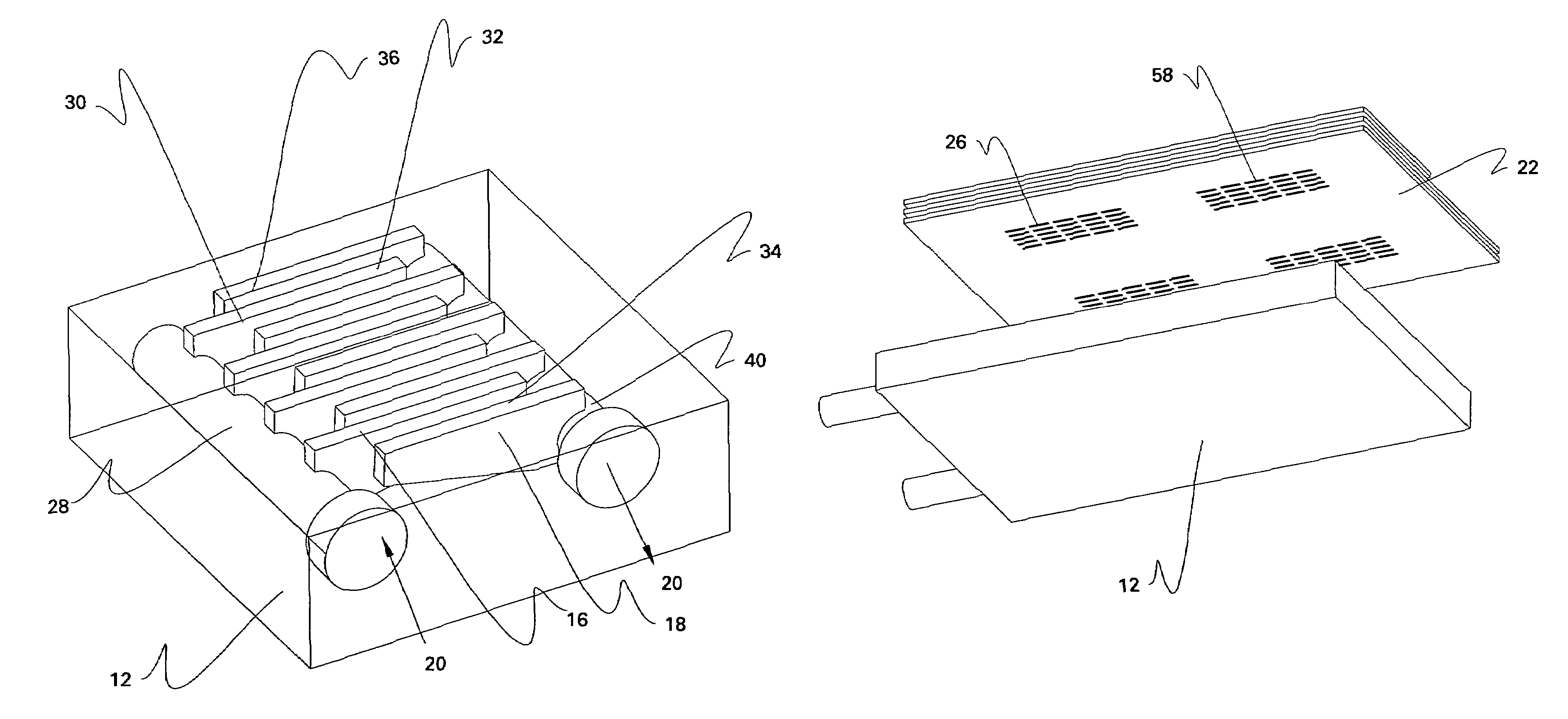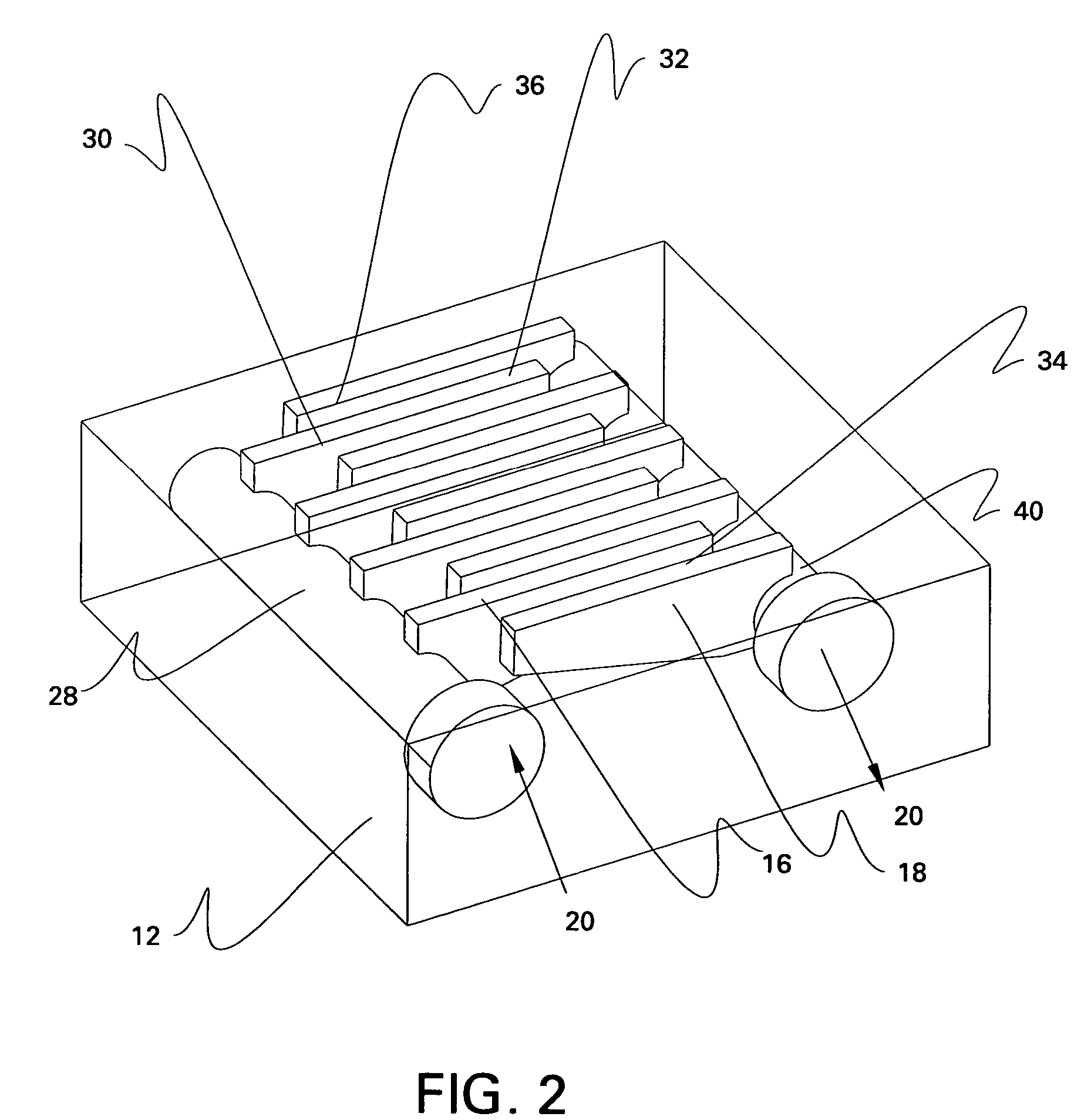Heat sink with microchannel cooling for power devices
a technology of microchannel cooling and power devices, which is applied in the direction of cooling/ventilation/heating modification, semiconductor/solid-state device details, semiconductor devices, etc., can solve the problems of increasing the difficulty of cooling power semiconductor devices, manufacturing difficulties, and natural and forced air cooling schemes that cannot handle heat flux
- Summary
- Abstract
- Description
- Claims
- Application Information
AI Technical Summary
Benefits of technology
Problems solved by technology
Method used
Image
Examples
Embodiment Construction
[0029]An apparatus 10 for cooling at least one heated surface 50 is described with reference to FIGS. 1-3 and 5. As shown, for example, in FIG. 1, apparatus 10 includes a base plate 12, which is shown in greater detail in FIG. 2. As shown, for example, in FIG. 2, base plate 12 defines a number of inlet manifolds 16 and a number of outlet manifolds 18. The inlet manifolds 16 are configured to receive a coolant 20, and the outlet manifolds 18 are configured to exhaust the coolant. As indicated in FIG. 2, for example, inlet and outlet manifolds 16, 18 are interleaved. As indicated in FIG. 1, apparatus 10 further includes at least one substrate 22 having a inner surface 24 and an outer surface 52, the inner surface 24 being coupled to base plate 12. As shown for example in FIGS. 3 and 5, the inner surface 24 features a number of microchannels 26 configured to receive the coolant from inlet manifolds 16 and to deliver the coolant to outlet manifolds 18. Microchannels 26 are oriented subs...
PUM
 Login to View More
Login to View More Abstract
Description
Claims
Application Information
 Login to View More
Login to View More - R&D
- Intellectual Property
- Life Sciences
- Materials
- Tech Scout
- Unparalleled Data Quality
- Higher Quality Content
- 60% Fewer Hallucinations
Browse by: Latest US Patents, China's latest patents, Technical Efficacy Thesaurus, Application Domain, Technology Topic, Popular Technical Reports.
© 2025 PatSnap. All rights reserved.Legal|Privacy policy|Modern Slavery Act Transparency Statement|Sitemap|About US| Contact US: help@patsnap.com



